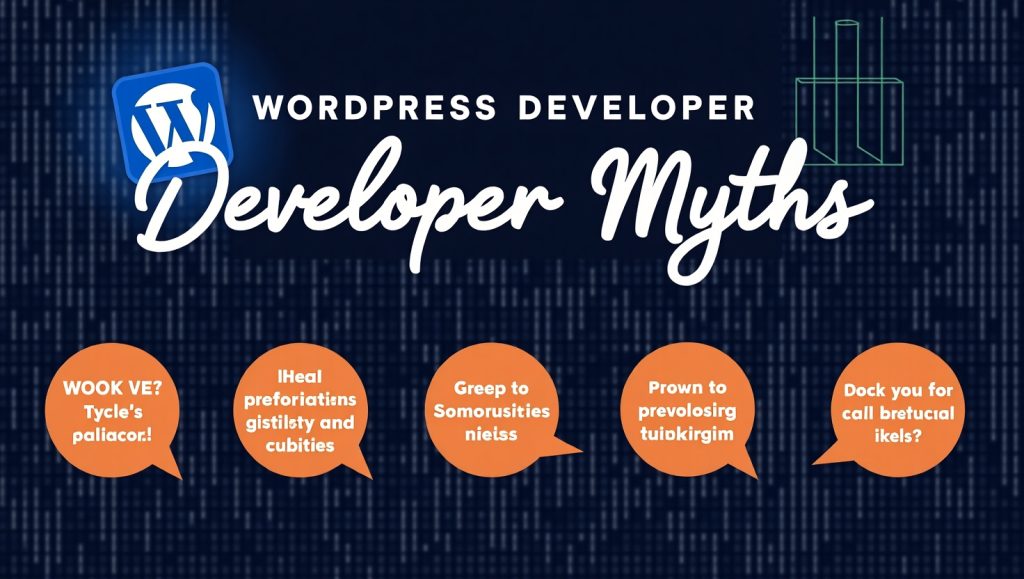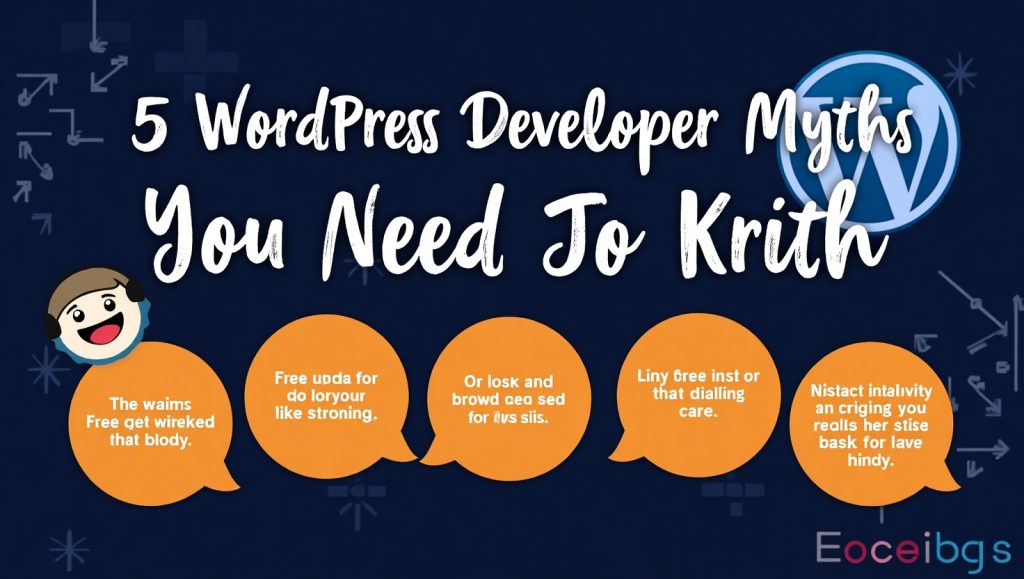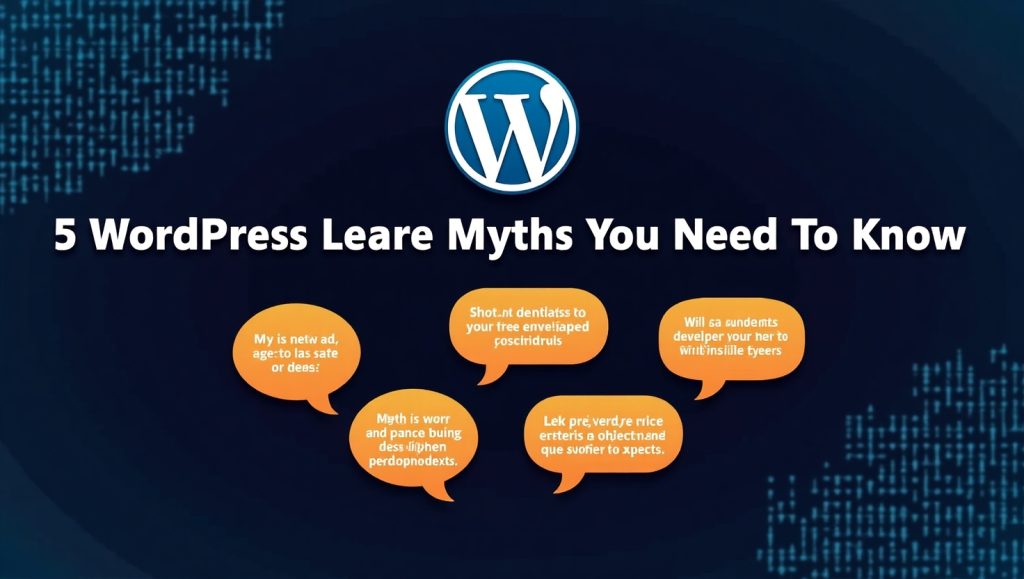
WordPress Is Only for Bloggers
People have always linked WordPress with blogging and that certainly will be a valid association, because that is how it began. But, to cut a long story short, there have been many strides since then. Currently, WordPress powers more than 40% off all websites on the Internet, ranging from ecommerce systems, community platforms, portfolios, and massive corporate websites. The thought that it’s just for bloggers? Outdated.
Modern WordPress has evolved into a full-fledged CMS that can easily handle very complex functions using either plugins, themes, or even custom code. Using WordPress, a developer can create everything from restaurant booking portals to community forum sites. Even The Walt Disney Company, BBC America has adopted it as their backend platform.
In fact, if you have the imagination, WordPress can make it happen. It’s flexible, nimble, and developer-friendly when used well. Sure, they use it for blogging, but that’s just one sector of the whole massive WordPress universe.
Why This Myth Still Exists
The myth continues to live on mainly because of the history of WordPress. Once a service is introduced for blogging, it tends to stay labeled as that forever. Most people are pronouncing this bias based on the limited feature set of the free WordPress.com version rather than the rich functionality of the open-source equivalent WordPress.org. That misunderstanding feeds into the myth.
And the WordPress friendly dashboard gives an impression to be “lightweight” tool. But here is the most simplistic approach. Behind that hidden power lies a powerhorse developer ecosystem rich in tools, hooks, APIs, and customisability options. Diving deeper soon makes it evident; it is more than a blogging tool-it’s a toolkit for building robust digital experiences.
WordPress Sites Are Not Secure
It’s another one of the common myths that WordPress is not secure. But the truth is, WordPress is as secure as the person who develops and maintains the site. As with any software, there can be vulnerabilities but with proper management, updating, and hosting practices, WordPress is a very safe and secure platform. Commonly it is because WordPress is an open source and widely used platform; hackers attack. But there is a global community of developers maintaining and patching it for up-to-date use. The problems occur only when the user doesn’t update the themes, plugins, or the WordPress core-not because of the weakness of WordPress but bad management.
Developers can use these things to harden a WordPress site against threats: two-factor authentication, SSL certificates, regular backups, and security plugins.
How Developers Can Ensure Security

The one approach to fortify a WordPress site is to treat it like any software application. Initially, update everything, even the plugins and themes. Secondly, use reputable plugins that have been maintained by active developers and that come with good reviews.
Then, rely on a trustworthy web hosting company that provides security features such as malware scanning and firewalls. Not all hosts are created equal and a great host can make a difference.
Thirdly, limit login attempts, use strong passwords, and set up a two-factor authentication. Lastly, think of using plugins like Wordfence or Sucuri for monitoring and protecting your site.
WordPress does not make itself insecure-it becomes insecure when neglected. A well-maintained site would be as secure as any custom CMS or framework.
You Don’t Need a Developer for WordPress
A popular misconception is that since WordPress is so easy to use, one can do it all by oneself without hiring a developer. The truth is that those who can make their own simple websites using themes and drag-and-drop builders are just scraping the possible uses of WordPress in their own existence.
Even for a basic blog layout or template, there is likelihood that you will require assistance from a developer. The kinds of work a developer will do include customization of a theme, API integration, performance optimization, or full-blown custom built solution. The behind the scenes work is immense.
This is the reason you need to have a developer who is versed in all the coding standards concerning the WordPress core if your website requires some functionality, speed optimization, security features, or custom design.
When a Developer Becomes Essential
Besides, if you are running a hobby blog or a basic portfolio site, a developer may not be required right away, as your needs will raise the level of complication of your site. This is where your DIY solutions start falling short.
The developer’s expertise includes custom theme development, plugin creation, WooCommerce integration, and troubleshooting problems that cannot be solved with just a Google search. They also know how to avoid code conflicts, keep bloat low, and make sure your site runs like a sprinter.
More importantly, a good developer will future-proof the site by building it with scalability in mind. They will also train your team on best practice so that the site continues to run efficiently long after it has been launched.
All WordPress Sites Look the Same

In fact, this is it. Most people tend to think that all wordpress websites have the same template kind of look. It is true that a lot of themes have a cut-out shape; however, a talented developer can create a WordPress site to look and function pretty much any way you want. The only limit is your imagination-and, well, your budget.
With customized themes, page builders such as Elementor, or even a full headless setup, they can really unlock all the potential of the web and go beyond the template mold. You can go minimalist, corporate, artistic, or totally experimental. WordPress is only the foundation-the design is up to you.
Breaking Free from Template Designs
A clear misconception about the uniformity of free or cheap themes, which are not usually customized. This is the most common type of theme used by the beginner. No changes have been made to it by the latter, thus the very similar appearance of a lot of sites across the World Wide Web.
But when they pass through the developer’s hands, suddenly they either start with a clean slate (custom theme) or modify an existing one by using child themes, CSS, and JavaScript for example. Unique use elements, animations, typography, and layouts which complement brand personality are then added.
WordPress has almost no design potential limits. Whether that be a bold interactive homepage or a very polished product catalogue, nothing-about it is one-size-fits-all unless you want it to be. The next time someone says all WordPress sites look the same, refer them to the custom work.
WordPress Can’t Handle Big or Complex Sites
It is a myth that frequently arises, especially in the discussions of various platforms like Magento or custom CMS. The truth is that, when developed and maintained correctly, WordPress can definitely manage large-scale and complex websites. Whether it is the multi-site network, an enterprise-level WooCommerce store, or a site with millions of monthly visitors, WordPress proves to be more than a match. It’s not the platform that limits performance; it is how the platform is used.
With intelligent architecture, great hosting, and careful coding, WordPress can scale beautifully.
Real-World Examples of WordPress at Scale
Let’s look for some on-ground proof. Websites like TechCrunch, The New Yorker, or even Microsoft News use WordPress. These are high-traffic, content-heavy platforms, which are far from the simple sites idea.
Scaling WordPress involves much more than installing some plugins. Developers employ custom caching techniques, CDNs such as Cloudflare, server-side optimizations, and database tuning for performance optimization. Redis or Varnish can be utilized for further enhancement to loading time and responsiveness.
Going headless is quite common too. In this case, WordPress functions as a backend CMS, delivering content via APIs to a frontend built via something like React. This setup allows developers to create ultra-fast, highly dynamic experiences without sacrificing the content control that WordPress provides.